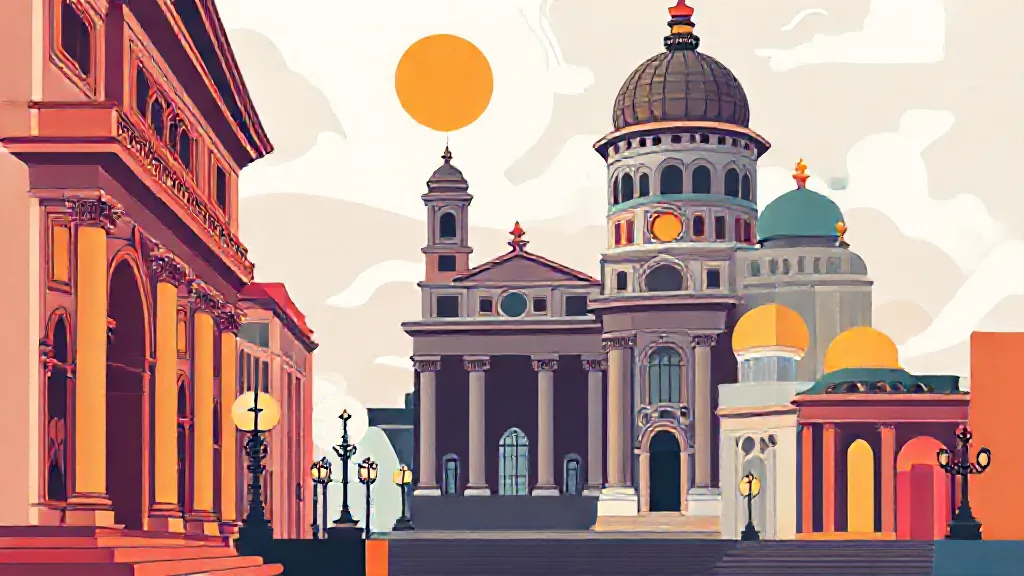The relationship between art and architecture has long been a subject of fascination and study. From the grand cathedrals of the Gothic era to the minimalist designs of contemporary architecture, art has played a pivotal role in influencing architectural styles and principles. This article delves into the intricate ways in which various art movements have shaped architectural practices, reflecting cultural, social, and technological changes throughout history.
The Renaissance: A Harmonious Blend of Art and Architecture
The Renaissance period marked a significant turning point in the history of art and architecture. Artists like Leonardo da Vinci and Michelangelo were not only painters and sculptors but also involved in architectural design. The use of perspective, proportion, and symmetry in their artwork directly influenced the architectural principles of the time.
The harmonious integration of art and architecture during the Renaissance is exemplified in structures like St. Peter's Basilica, where the artistic elements of sculpture and frescoes complement the architectural grandeur.
Baroque Architecture: Theatricality in Design
The Baroque period introduced a dramatic flair to architecture, characterized by bold forms, intricate details, and a sense of movement.
Artists such as Gian Lorenzo Bernini embodied this theatricality in their architectural works, creating spaces that evoked emotion and grandeur. The use of art in Baroque architecture was not merely decorative but served to enhance the overall experience of the space. The interplay of light, shadow, and ornate details in buildings like the Palace of Versailles demonstrates how art can transform architectural environments into immersive experiences.
Modernism: A Break from Tradition
The advent of Modernism in the early 20th century marked a radical departure from historical architectural styles. Influenced by movements like Cubism and Futurism, architects sought to embrace new materials and technologies, leading to innovative designs that prioritized functionality over ornamentation. Artists such as Pablo Picasso and Wassily Kandinsky inspired architects to experiment with form and color, resulting in iconic structures like the Villa Savoye by Le Corbusier.
This era exemplifies how art can challenge architectural norms and foster a new aesthetic language.
Postmodernism: Eclecticism and Irony
Postmodern architecture emerged as a reaction to the rigid principles of Modernism, embracing eclecticism and historical references. Artists and architects like Robert Venturi and Frank Gehry utilized playful forms, bright colors, and ironic elements to create buildings that engaged with their surroundings.
The influence of art in this movement is evident in structures like the Guggenheim Museum Bilbao, where the building itself is a work of art, blurring the lines between artistic expression and architectural function.
Cultural Influences: Reflecting Identity through Design
Art and architecture are deeply intertwined with cultural identity. Throughout history, various cultures have used architecture as a medium to express their values, beliefs, and artistic traditions.
For example, Islamic architecture is renowned for its intricate tile work and calligraphy, which serve both decorative and spiritual purposes. Similarly, Indigenous architecture often incorporates natural materials and shapes that reflect a deep connection to the land. This cultural interplay highlights how art can serve as a narrative device within architectural design.
Sustainable Architecture: Art as a Catalyst for Change
In recent years, the concept of sustainability has gained prominence in architecture, with artists and architects collaborating to create environmentally conscious designs. The integration of art in sustainable architecture not only enhances aesthetic appeal but also promotes awareness of ecological issues. Projects like the Eden Project in the UK showcase how artistic installations can coexist with functional architecture, encouraging a dialogue about sustainability and environmental stewardship.
Digital Art and Architecture: The Future of Design
The rise of digital technology has opened new avenues for the intersection of art and architecture. Digital art allows for innovative design processes, enabling architects to visualize and manipulate forms in ways previously unimaginable. The use of parametric design and 3D printing has led to the creation of unique structures that challenge traditional architectural conventions.
This fusion of digital art and architecture is shaping the future of design, blurring the lines between creator and creation.
Conclusion: The Ever-Evolving Relationship
The influence of art on architecture is a dynamic and evolving relationship that reflects broader societal changes. As new artistic movements emerge and technology advances, the dialogue between art and architecture will continue to inspire innovative designs that resonate with cultural significance.
Understanding this interplay not only enriches our appreciation of both fields but also highlights the importance of collaboration in creating spaces that are both functional and artistically meaningful.
